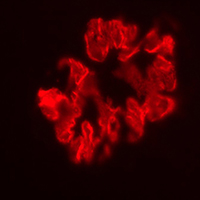Stretching prior to resistance training promotes adaptations on the postsynaptic region in different myofiber types

Accepted: 1 February 2022
HTML: 24
All claims expressed in this article are solely those of the authors and do not necessarily represent those of their affiliated organizations, or those of the publisher, the editors and the reviewers. Any product that may be evaluated in this article or claim that may be made by its manufacturer is not guaranteed or endorsed by the publisher.
Authors
The morphology of the neuromuscular junction adapts according to changes in its pattern of use, especially at the postsynaptic region according to the myofibrillar type and physical exercise. This investigation revealed the morphological adaptations of the postsynaptic region after static stretching, resistance training, and their association in adult male Wistar rats. We processed the soleus and plantaris muscles for histochemical (muscle fibers) and postsynaptic region imaging techniques. We observed muscle hypertrophy in both groups submitted to resistance training, even though the cross-section area is larger when there is no previous static stretching. The soleus postsynaptic region revealed higher compactness and fragmentation index in the combined exercise. The resistance training promoted higher adaptations in the postsynaptic area of plantaris; moreover, the previous static stretching decreased this area. In conclusion, the neuromuscular system’s components responded according to the myofiber type even though it is the same physical exercise. Besides, static stretching (isolated or combined) plays a crucial role in neuromuscular adaptations.
Supporting Agencies
This work was supported by Grant #2017/12525-1, São Paulo Research Foundation (FAPESP), in part by the Coordenação de Aperfeiçoamento de Pessoal de Nível Superior — Brasil (CAPES) — Financing Code 001, and UNESP -PROPG Edital 19/2021.How to Cite

This work is licensed under a Creative Commons Attribution-NonCommercial 4.0 International License.
PAGEPress has chosen to apply the Creative Commons Attribution NonCommercial 4.0 International License (CC BY-NC 4.0) to all manuscripts to be published.

 https://doi.org/10.4081/ejh.2022.3356
https://doi.org/10.4081/ejh.2022.3356






